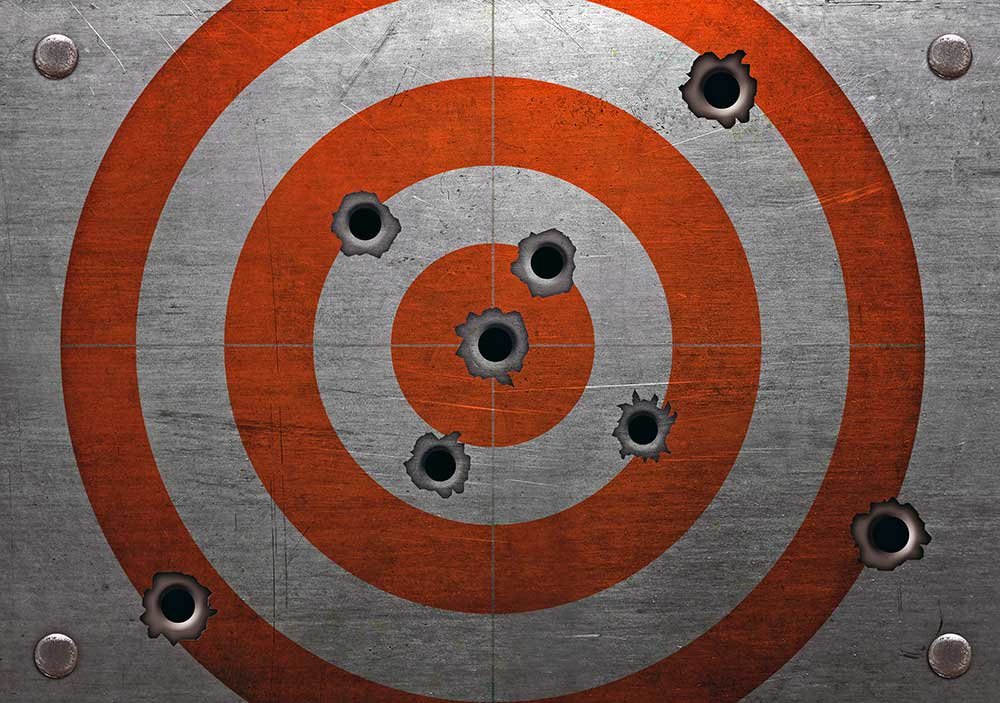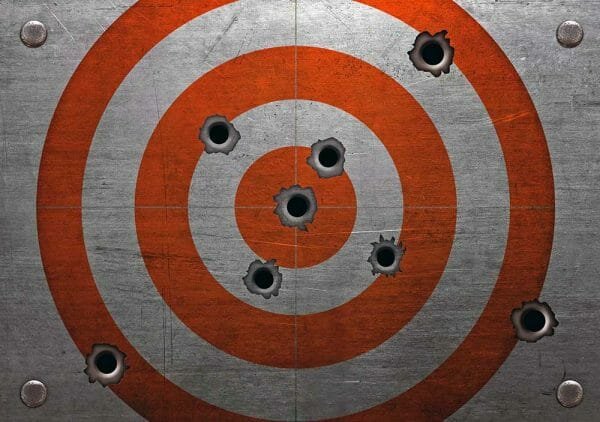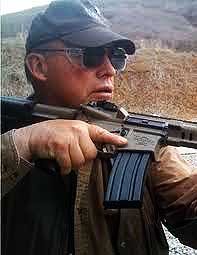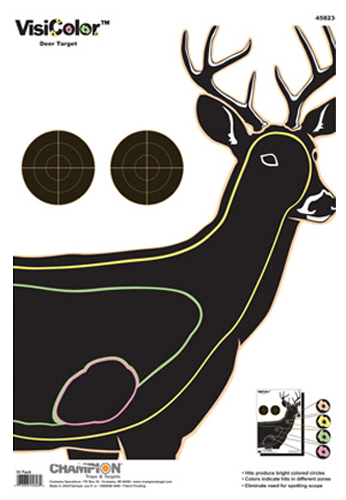Bullet Misses & Intentional Hits vs. Unintentional Hits

Opinion

“Don’t be buffaloed by ‘experts’ and ‘elites.’ ‘Experts’ possess more data than judgment. ‘Elites’ become so inbred that they produce hemophiliacs who bleed to death the moment they are nicked in the real world.” ~ Colin Powell.
The Myth of the “Miss!”
Any time we launch a bullet, under any circumstance, the launch will fall into one of only two possible categories:
1) Intentional
In this case, the target is presumably “intended,” but it can yet be ultimately “licit” or “mistaken.” In the later case, the launch and target are both intended, but even when “successful” the outcome is still ultimately not what the shooter wanted.
2) Unintentional
In the case of the “UD” (unintentional discharge), the bullet’s impact point is (presumably) always going to be unintended.
An issue develops during training with the too-often-used term, “miss”
When we say a bullet “missed,” what we’re really saying is that the launch was intentional, but the bullet failed to impact in the desired place, as if the bullet itself magically dematerializes the instant it fails in its intended mission.
What we need to be teaching is that there are only two possible outcomes associated with the intentional launch of a bullet:
- 1) Intentional hits
- 2) Unintentional hits
By definition, when a bullet fails to hit what you wanted it to hit, then it will invariably hit something you didn’t want it to hit. Contrary to the thinking of the naive, your bullet does not suddenly cease to exist the instant it flies past the intended target.
Every bullet launched will return to Earth, without fail.
Ultimately, there is no “safe backstop,” no “safe direction,” and no such thing as “safe shooting,” so long as the term “safe” implies a guarantee that nothing bad can possibly happen. Shooting, as well as gun-handling in general, can be done with “relative safety,” but risk always attaches, as it does to every other human activity!
The foregoing brings us to a discussion of the tired-out term, “accuracy.”
Like “fairness,” “accuracy” is a relative term. Any time we use that term, we must first define the context so that our point is comprehensible. People launch bullets for many different reasons, some serious, some serious/recreational (hunting), and some purely recreational (competition, plinking, etc)
The foregoing are all are legitimate, although I have scant personal interest in the last category.
In a serious domestic shooting (lethal self-defense), our goal is to rapidly disable a close, deadly threat. Subsequent death of the threatening person (quick or otherwise) may or may not occur, but it is not necessarily our goal, either way.
With pistols, we usually aim at the major components of the threat’s circulatory system, creating a rapid loss of blood pressure and ultimately a state of coma. Our “target” (assuming we have the choice) is thus an elongated center-mass rectangle, from neck to navel.
With military shooting, involving a rifle (particularly sniping), our goal is simply to “manufacture casualties.” A solid hit nearly anywhere on the body will thus usually be considered “effective.” At most likely distances, prompt and complete “deanimation” of the target is rarely necessary. Again, death (quick or slow) is not a particular goal. We are successful merely when we change the enemy combatant’s status to “combat ineffective.”
With big-game hunting, our goal is twofold:
- 1) The quick and humane death of the animal.
- 2) At impact, the animal falls in place, or falls after running only a short distance
Accordingly, with big-game hunting, our target is a circle (superimposed on the animal) twenty centimeters (eight inches) in diameter (more or less, depending upon the size of the animal). So, at ranges and under circumstances where we’re not at least eighty percent confident our bullet will hit within that circle, hunting ethics demand that we decline the shot!
Therefore, when the issue of “accuracy ” arises, we must first define the context. Otherwise, claims that “my gun is more accurate than yours” are meaningless and irrelevant!
Likewise, when we train, instructors must carefully define the context so students understand exactly what we’re trying to accomplish from the beginning.
Our “goal” must be defined and understood. Likewise, our “target” must be defined and understood. In addition, the risks and consequences of “unintentional hits” must also be understood.
The foregoing will then be consulted when we devise our training drills and our system of “scoring”.
So, when a student asks, “When I’m not as accurate as I need to be, what do I need to do?”
The answer is usually:
- 1) Slow down. Be more careful/measured/unruffled with your trigger-press
- 2) Get steadier, through posture or a physical rest for the weapon (when possible)
- 3) Get closer to the target (when possible and practicable)
- 4) Change equipment. A different weapon, caliber,or optic may be called for (when possible)
- 5) Decline the shot (when you have the option)
And, when a student asks, “Can I be more accurate than I need to be?”
The answer is “Yes”
When you squander valuable seconds in an attempt to achieve a degree of accuracy in excess of what is legitimately necessary in order to achieve your defined goal, you’ve obviously misunderstood the task at hand!
I hope the foregoing is helpful in understanding our chosen undertaking as both instructors and students of this Art.
/John
Live Inventory Price Checker
|
|
Fbi Qit-99 Command Paper Targets – Fbi Qit-99 Command Paper Targets 50 Pack |
Brownells.com |
|
|
|
|
Birchwood Casey Eze-Scorer 23″x35″ Transitional Blue Paper Target, 100 Pack – BC-37024 |
Palmetto State Armory |
|
|
|
|
Birchwood Casey Eze-Scorer 23″x35″ Transitional Blue Paper Target, 100 Pack – BC-37024 |
Palmetto State Armory |
|
|
|
|
Champion Targets 13×18 VisiColor Deer Paper Targets 10 Pack |
Ammunition Depot |
|
|
Master Your Draw with the DeLorean Drill | Concealed Carry Video
About John Farnam & Defense Training International, Inc
As a defensive weapons and tactics instructor, John Farnam will urge you, based on your beliefs, to make up your mind about what you would do when faced with an imminent lethal threat. You should, of course, also decide what preparations you should make in advance if any. Defense Training International wants to ensure that its students fully understand the physical, legal, psychological, and societal consequences of their actions or in-actions.
It is our duty to make you aware of certain unpleasant physical realities intrinsic to Planet Earth. Mr. Farnam is happy to be your counselor and advisor. Visit: www.defense-training.com






Leave a Reply
You must be logged in to post a comment.